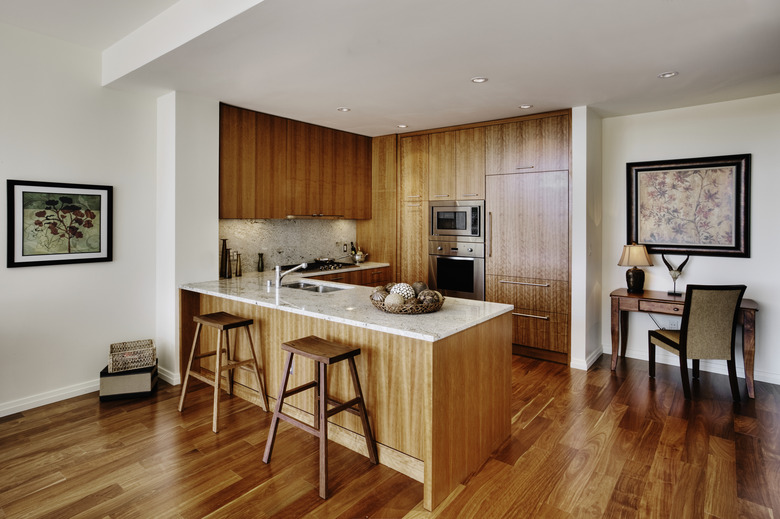How To Install A Shiplap Wood Floor
Before you go the the trouble of installing shiplap planks on your floor, you should consult a flooring pro who can talk you out of it. Shiplap is for siding, and while there's no rule against using it for flooring, there are good reasons not to do this. A shiplap wall looks great, but a shiplap floor is a little incongruous — like carpeting on the ceiling.
Okay, so you like the rustic look of shiplap and think it would look great in your sunroom or den. It probably will, as long as you install it correctly. Keep in mind that shiplap isn't tongue-and-groove material, as is most hardwood and pine flooring. You won't be able to use conventional flooring installation methods.
What's So Bad About a Shiplap Floor?
What's So Bad About a Shiplap Floor?
The first strike against shiplap as a flooring material is that it isn't tongue-and-groove like most flooring. T & G flooring boards are milled this way to provide stability, and to allow the flooring to be installed with hidden nails. You lose both of these benefits when you install shiplap.
A second strike against shiplap is that it's typically wide. Because it's often made from a softwood, such as pine or redwood, it's more likely to warp, especially when you install shiplap in a sunroom or some other semi-exposed space. Conventional flooring also warps, but the tongue-and-groove construction of the boards holds them together to minimize the effects. But remember, shiplap doesn't have a tongue and groove.
Strike three is that shiplap is difficult to maintain. The deep groove between planks is a magnet for dirt. Moreover, even the best finish is bound to wear off, and sanding the floor is more difficult because of the top nails.
Procedure for Installing a Shiplap Floor
Procedure for Installing a Shiplap Floor
You should cover the floor with a moisture barrier before laying any type of hardwood flooring, and that's doubly important when laying shiplap because of its tendency to warp.
In place of a tongue and a groove, a shiplap plank has an underlay in one side and an overlay on the other. You must lay the planks with the underlay facing into the room. When laying the first row, it's a good idea to trim off the overlay side with a table saw because the overhang is weak and can crack under the weight of a chair or sofa leg.
Shiplap planks are easy to fit together. Just place the next plank over one that's already installed with the overlay overlapping the underlay, and push the planks as close together as possible. No tapping is needed, and you don't have to manipulate the planks to make them click together as you do laminate planks.
To fasten shiplap planks to the subfloor, you can use finish nails, nails with decorative heads or trim screws. Drive each fastener through the overlay so it penetrates the underlay and sinks about 1.5 inches into the subfloor. The fasteners remain visible, even if you sink the heads and fill the holes with floor filler, so it's a good idea to align them to form straight lines across the floor. It helps to use a straightedge or a chalk line to do this accurately.
Maintaining a Shiplap Floor
Maintaining a Shiplap Floor
The deep grooves between boards collect dust and call for extra cleaning effort, using a vacuum with a crevice tool. The floor finish, which you apply with a finish applicator after nailing down the floor, requires periodic mopping. Use a damp mop instead of a wet one to avoid having water seep through the gaps between planks.
If you sink the nail or screw heads, you can sand the floor after installation and before applying the finish. You may have to do it again when the finish wears out. Be sure to check all the fasteners and reset any which are protruding, or you'll ruin your sanding drum.
